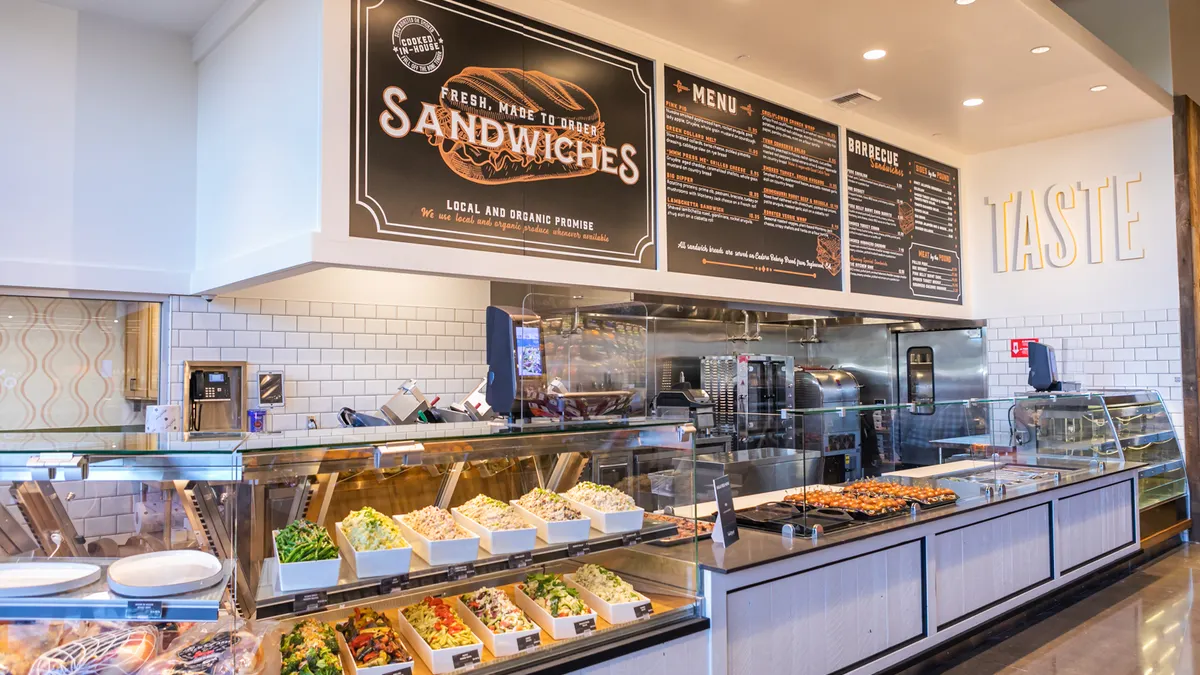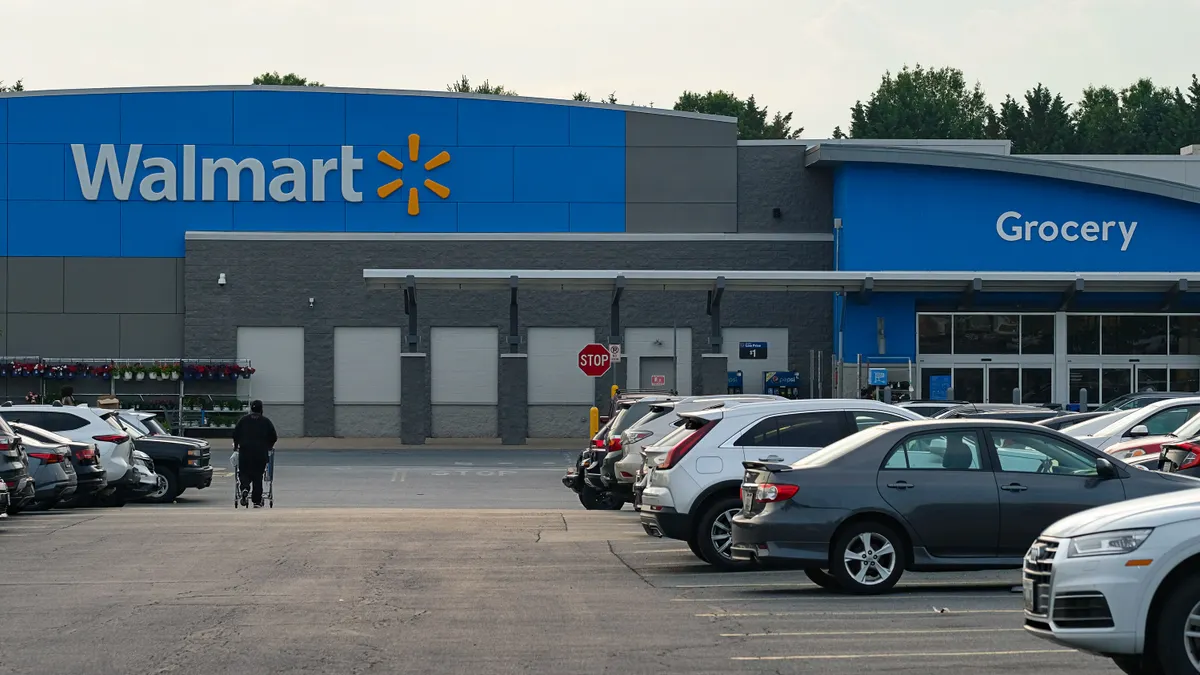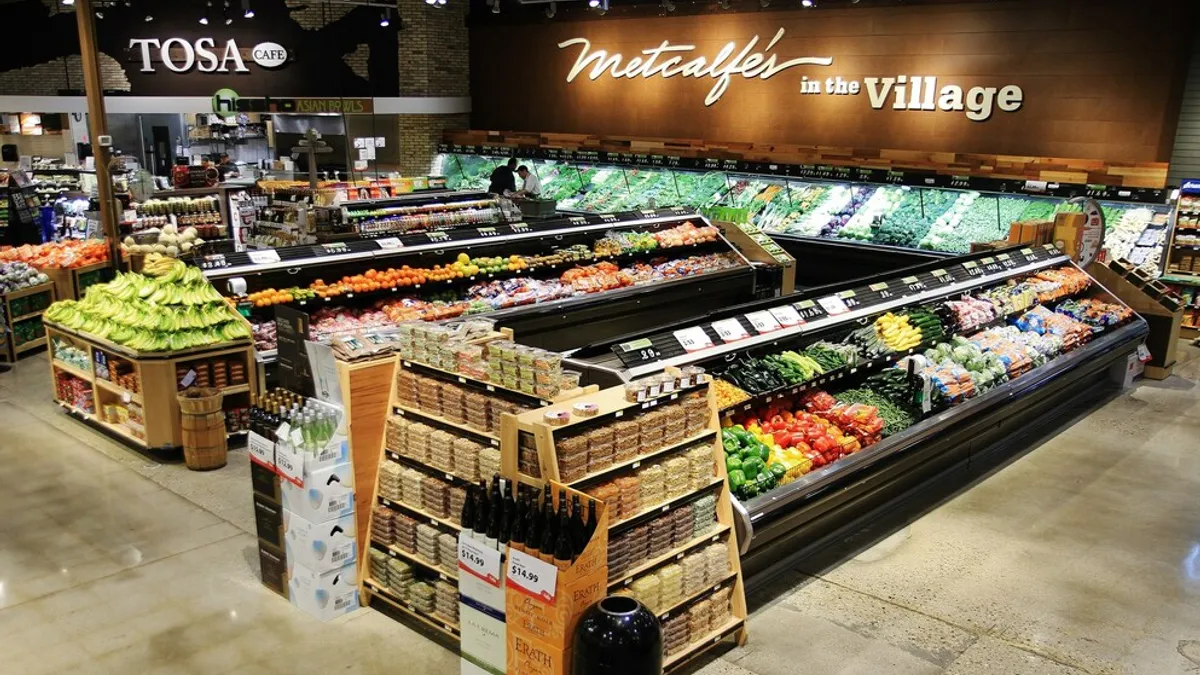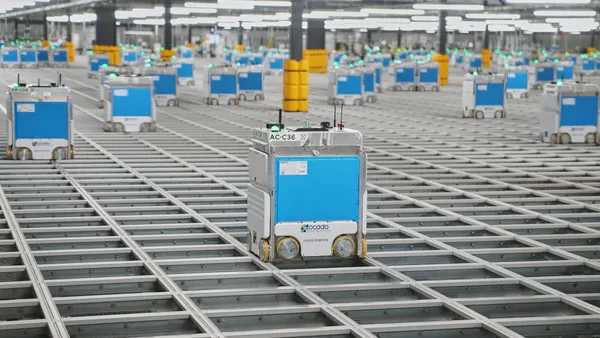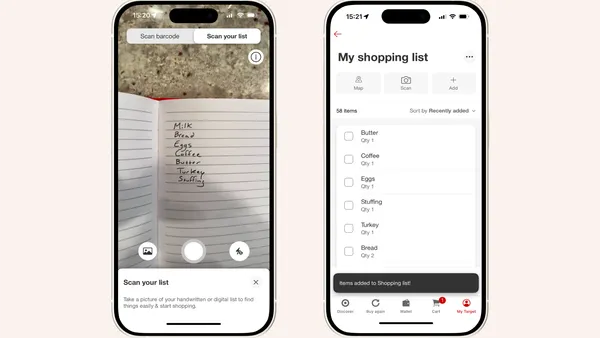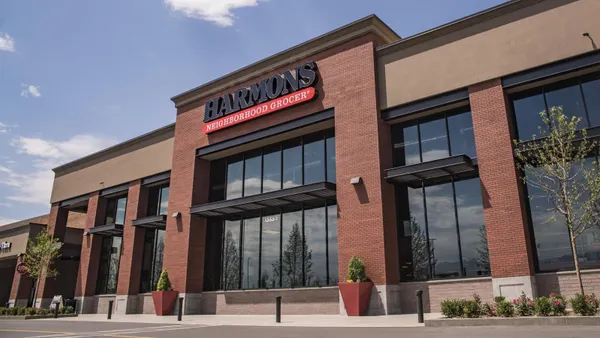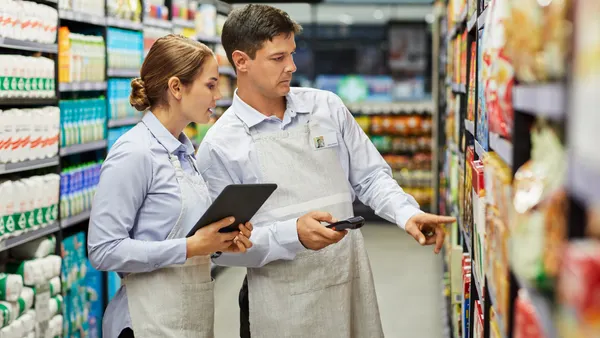LAS VEGAS — Good Food Holdings, the parent company of several West Coast specialty chains , is reimagining its upscale, full-service stores — and adding technology to enhance its customer service.
During a Groceryshop session last week, Good Food Holdings CEO Neil Stern likened the stores the company runs to gymnastics scoring, which combines a Difficulty Score with an Execution Score.
“We purposely build boxes that have a really high degree of difficulty to run, so we have to be focused on execution, and then we have to give our associates and team members the tools to make that easier for them,” Stern said during a panel on maximizing store efficiency.
A newly opened New Leaf Community Markets store in Santa Cruz, California, for example, has a coffee and juice bar, poke and sushi bars, a deli, a sandwich shop and departments for bakery, seafood, meat and floral, he said.
“Five years ago, we would have been here saying high-service means high-touch, and that means full-service levels across all of our counters,” Stern said. But then the pandemic shifted Good Food Holdings’ mindset, and since then, the parent company and its five banners have selectively piloted and rolled out digital innovation to benefit customers and workers.
“We've pivoted quickly to say, ‘I’m going to give that high-touch service when the customer wants it’ … That is an evolution philosophically from where we were,” Stern said, noting that the company only recently added self-checkouts to the stores it operates.
While Good Food Holdings benefits from having several banners where it can test different technologies and share learnings, the company still faces limited time, scale and capital to play with, Stern noted. Challenges include finding technology that is seamless for customers and workers as well as finding plug-and-play solutions that can work with each other.
“We see a lot of solutions that are wonderful as freestanding solutions, but if we can’t get it all tied together, I'm not going to solve” the issues the company aims to address, Stern said.
Grocery Dive caught up with Stern after his session at Grocershop to learn more about Good Food Holdings’ evolving approach to tapping labor and technology as components of its customer service strategy.
This interview has been edited for length and clarity.
GROCERY DIVE: During the session, you mentioned how a store in Beverly Hills, California, had 12 different high-service areas prior to the pandemic and that you had to figure out which of those could use changes to benefit customers and associates. Can you give some examples of what changed and why?
NEIL STERN: Part of the change was moving more to pre-packaged products. You can get a sandwich that can be custom-made, but I also have sandwiches sitting in the case. You can make your own poke bowl in our environments, but we also have premade bowls.
I would have said five years ago, ‘No, no, I’m not going to have that prepackaged because it’s not as good or as fresh.’ But I think the reality is customers are looking for that. They want that optionality available for them.
How do you figure out which touchpoints need a faster, more convenient option versus which ones don't?
At Bristol Farms, we’re known for service meat and butchery. Do you want a custom cut from the butcher? Do you want to talk to the butcher about what you're doing or recipe tips? Great. But I also want to have products available for self-service.
I don’t want to force you to a service case if you don’t want service, and I don’t want to be only self-service if you actually want that interaction. That interaction is part of what makes us different, so I don’t want to be a self-service store, because I think that diminishes what we can provide.
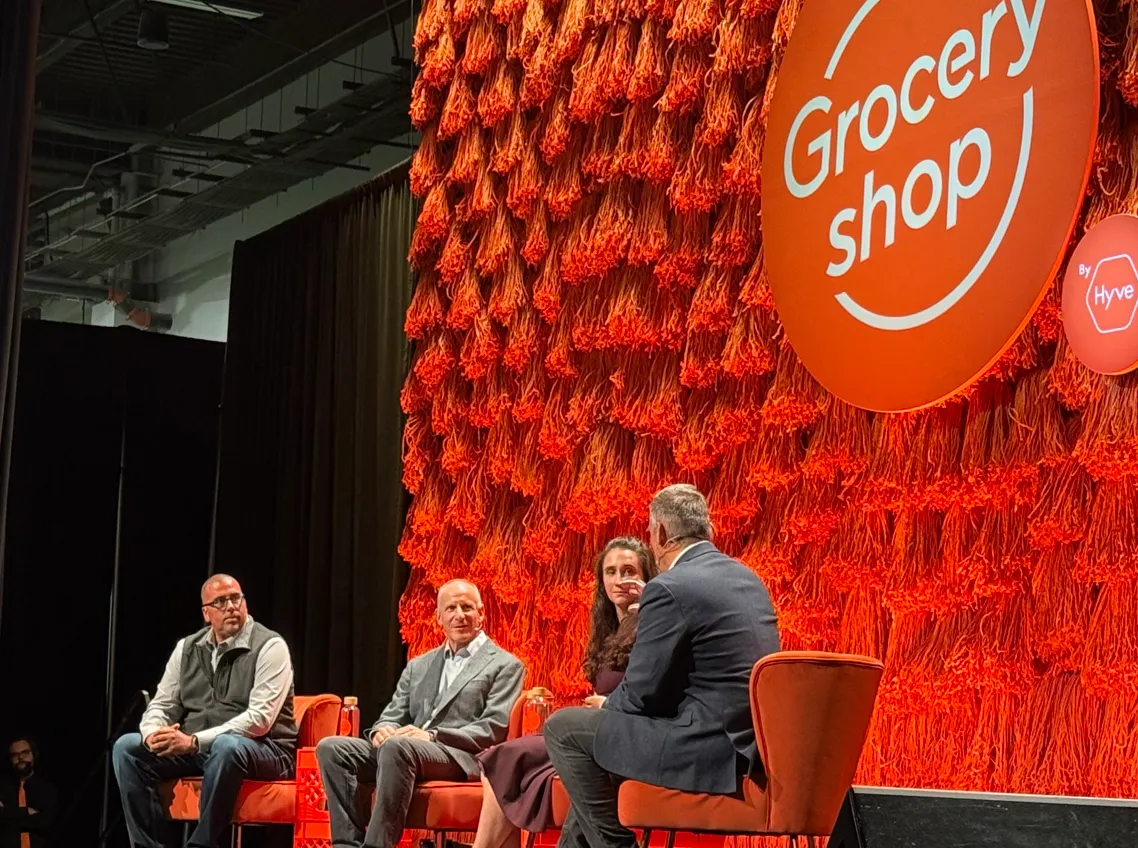
From a labor perspective, how does offering prepackaged items shift where you have people work in the store?
We’re putting a little bit more into production than service. I think it’s a frustration for a lot of customers that if I’m making you custom sandwiches, I may only have two people behind the counter, whereas if you’re ordering [a sandwich], I can have somebody who’s focused on producing sandwiches, and I can get a lot more efficiency.
Five years ago, we had zero self-checkouts. We now have self-checkouts in every store in the company, and about 35% of our transactions go through self-checkout. The data we have is 40% of customers prefer full-service checkout, 40% of customers prefer self-checkout and 20% don't care.
You talked in the session about being excited about looking at order-ahead technology. Can you share more?
In our world, [the order-ahead kiosk] is in our coffee and juice bar and in our sandwich bar — those areas where we know we get the line buildups.
We’re going to be looking at putting in kiosks. You can be a high touch, but if you're not giving customers those same tools, it’s a problem. It's part of Starbucks’ business: If I can’t order in advance, I don’t want to wait.
It'd be wonderful to have a conversation with the barista about the weather at times, but a lot of times, it's a 5-second transaction: I go through the door, I pick up my cup, I say ‘Thank you,’ and Ieave. And if that’s what I — as a customer — choose in that moment, then that’s high service.
You also brought up in the session how making different technologies, like electronic shelf labels, hyper-connected is the next step in the digital evolution. What are the challenges there?
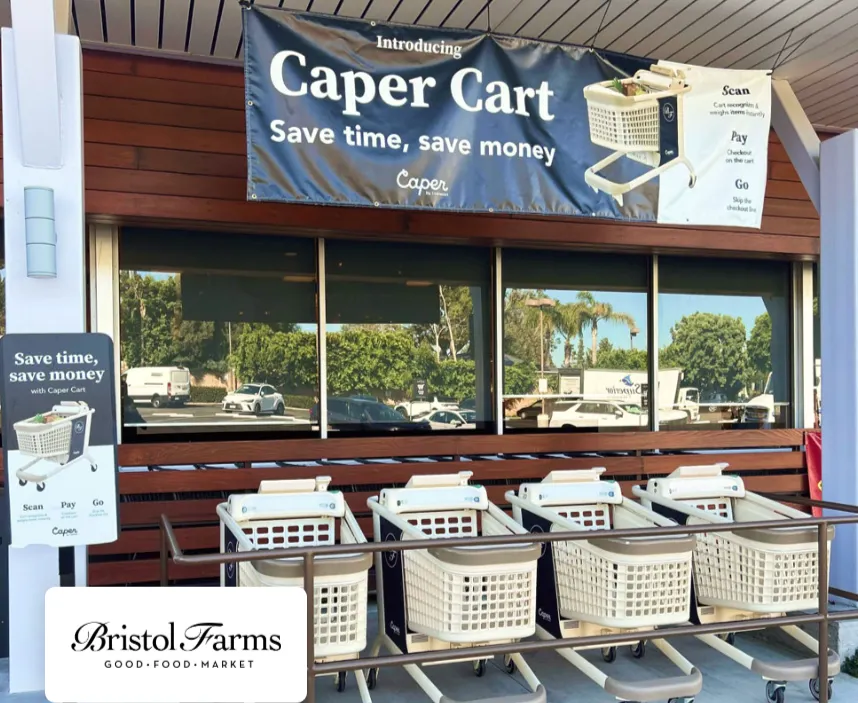
The challenges would be obviously different vendors, different systems, but a lot of it is getting the pieces integrated. We have ESLs in Seattle, where Fusion and Instacart work together [on pick-to-light], so that is bringing together two different vendors.
I want to unlock a future where you're going to come in and if you’re vegan, the ESL light pops up and there's your vegan options or gluten-free or keto. I need multiple kinds of suppliers to work together to make that happen.
You mentioned exploring new loyalty program capabilities. What would that look like?
Our mantra has always been: Centralized tools, localized execution. We use [Instacart’s] Storefront Pro for e-commerce. If you go on our websites and you go to Bristol Farms, it's going to look and feel one way [compared to] if you go to New Seasons, they want to focus more on local. Bristol may want to focus more on discovery.
So let’s take a loyalty program to an extreme. I may want one market to run a points-based loyalty program — spend dollars, earn points, redeem points — and maybe at another market, I might want to do an aspirational-based program that's more about, ‘Hey, you’re invited to a wine tasting.’


